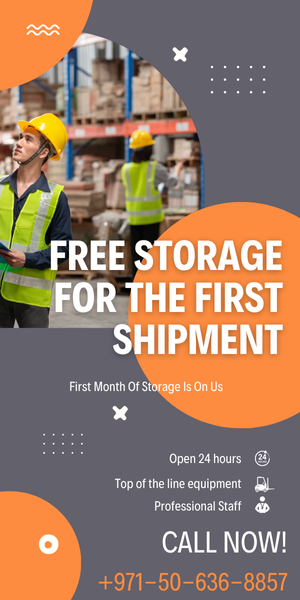If you’re starting an e-commerce business or expanding your product line, importing products from China to the UAE can open new opportunities, if done right. Here’s a simple, clear guide to help you through the process from start to finish.
1. Register Your Business and Get the Right License
Before anything else, make sure your business is legally set up. You’ll need a valid trade license from the Department of Economic Development (DED) or a relevant free zone if you’re operating there. Some products, like electronics, food, or cosmetics, require additional approvals. Always make sure your business activity matches what you plan to import.
2. Find Reliable Suppliers
Use trusted platforms like Alibaba or Global Sources to find suppliers. Order samples, check product quality, and make sure all agreements are clear, especially around payment terms, shipping methods, and Incoterms like FOB (Free On Board) or CIF (Cost, Insurance, Freight). Good communication at this stage saves you from major issues later.
3. Choose the Best Shipping Method
Your choice of shipping depends on your budget, time, and volume:
- Sea freight is affordable for large shipments but can take 25 to 35 days.
- Air freight is faster (5 to 7 days), ideal for urgent or high-value goods.
- Express couriers like DHL or FedEx deliver small parcels in 2 to 5 days, but at a higher cost.
4. Prepare the Correct Documents
Documentation is essential to avoid delays. Make sure you have:
- A commercial invoice
- Packing list
- Bill of lading (for sea freight) or airway bill (for air freight)
- Certificate of origin
- Import permits (if required)
Each document should match what’s being shipped, especially in quantity, value, and HS codes.
5. Clear Customs and Pay Import Duties
Once your goods arrive in the UAE, they must clear customs. This usually involves:
- Submitting documents online or via a customs broker
- Paying 5% customs duty based on the CIF value
- Paying 5% VAT on the total landed cost (including duty)
After successful clearance, your goods are released and ready to move into your warehouse or fulfillment center.
6. Consider Free Zones for Storage or Re-Export
If your goods will be stored or re-exported, using a free zone might help reduce costs. Free zones allow 100% foreign ownership, no import duty (if products stay within the zone), and simplified documentation. However, moving goods to the mainland will still require customs clearance.
7. Work with a Freight Forwarder or Customs Broker
If this is your first time importing, consider hiring a freight forwarder or customs broker. They’ll help with:
- Shipment coordination
- Documentation
- Duty calculations
- Customs procedures
This support can save you time and prevent costly mistakes.
Summary Table
| Step | What You Need to Do |
|---|---|
| 1 | Register business and get an import license |
| 2 | Choose trustworthy Chinese suppliers |
| 3 | Decide on sea, air, or express freight |
| 4 | Prepare proper documentation |
| 5 | Pay duties and clear customs |
| 6 | Use free zones if it suits your needs |
| 7 | Partner with a forwarder or broker |
Need Help with Logistics?
At SamVertex, we help UAE sellers import from China with confidence. From sourcing support and customs clearance to local warehousing and fulfillment, we simplify the entire process. Reach out for a free consultation and let us take the hassle out of global sourcing.
Resources & References
- Decisive Zone: How to Import Goods to the UAE
- Trade.gov UAE Import Requirements
- ProConnect Logistics: Clearance Guide
- DFH Freight: China to UAE Freight Options
- Ethereal Logistics: China to Dubai Guide
- Al Sharqi: UAE Import Basics
- Ubest Shipping: Import Guide
- Dantful: China to UAE Shipping Procedure
- Wikipedia: UAE Free Zones List

